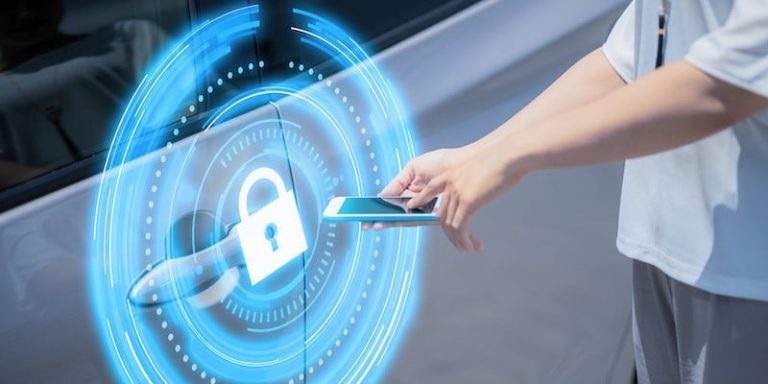The digital landscape is constantly evolving, and security remains a top priority for individuals and organizations alike. The LC88 device has recently elevated its security features by integrating next-level encryption technologies. LC 88 Boosts Security with Next-Level Encryption, ensuring that sensitive data remains protected against increasingly sophisticated cyber threats. This article explores how this advanced encryption feature works, how to leverage it effectively, comparisons with previous technologies, and expert advice on maximizing security benefits.
Understanding the Core of LC88’s Next-Level Encryption
Before delving into how LC88 Boosts Security with Next-Level Encryption, it’s essential to understand what this entails. Encryption serves as the backbone of data protection, transforming information into an unreadable format for unauthorized users. With more complex cyber threats emerging daily, traditional encryption is no longer sufficient.
The next level of encryption incorporated into the LC88 ensures a Titan shield for digital data, combining multiple cryptographic algorithms, key management improvements, and hardware-based security protocols. This advanced approach not only enhances data confidentiality but also improves integrity and access controls.
The integration of this next-level encryption signifies a strategic move toward future-proofing digital interactions. For users, it translates to increased confidence in the device’s ability to safeguard personal and financial information. Understanding how this encryption works helps users optimize security, especially when handling sensitive transactions or communications.
How to Use LC88 Boosts Security with Next-Level Encryption Effectively
Harnessing the full potential of this advanced encryption feature involves more than just initial setup; it requires ongoing management and awareness. Users should ensure that firmware and security patches are regularly updated to maintain encryption integrity. Proper device configuration, including enabling all security features, is crucial.
Begin by activating the encryption options available in the LC88 settings menu. It’s recommended to use strong, unique passwords, and where possible, enable multi-factor authentication to add layers of security. Additionally, secure key management practices—such as avoiding sharing encryption keys or storing them in insecure locations—are vital.
To maximize the benefits, users should also consider additional security measures: using virtual private networks (VPNs) during data transmission, employing endpoint security, and practicing safe user behavior like avoiding suspicious links or attachments. These best practices complement the encryption capabilities, creating a robust security ecosystem.
Examples of LC88’s Next-Level Encryption in Real-World Scenarios
The implementation of next-level encryption in the LC88 opens a variety of practical applications that demonstrate its importance. For instance, in financial transactions, this encryption ensures that sensitive payment data transmitted between devices remains inviolate, minimizing the risk of interception or tampering.
In enterprise environments, LC88’s advanced encryption safeguards corporate communications and intellectual property. Companies are now better equipped to protect confidential information against espionage and cyberattacks, especially during remote work scenarios where data transmission occurs over potentially insecure networks.
Furthermore, in healthcare, the encryption secures patient records and sensitive medical data, helping organizations comply with privacy regulations such as HIPAA. The robustness of LC88’s encryption provides peace of mind that critical personal health information is shielded from malicious entities.
Comparing Traditional Encryption with LC88’s Next-Level Approach
Many devices and platforms still rely on standard encryption methods, which, while effective in certain contexts, struggle against the rising tide of cyber threats. The key difference with LC88’s approach is the integration of multi-layered encryption protocols, hardware-based security, and dynamic key management.
Traditional encryption often uses a single cryptographic algorithm, making it more vulnerable if vulnerabilities are discovered. In contrast, LC88’s next-level encryption employs a combination of several algorithms, providing redundancy and increased difficulty for attackers to decrypt the data.
Additionally, hardware-based encryption offers performance benefits and resistance against software attacks. This means that LC88 not only provides stronger security but also maintains efficiency in data processing. For users, understanding these comparisons underscores the value of upgrading to devices with advanced encryption features to stay ahead in cybersecurity.
Expert Advice for Maximizing Next-Level Encryption Benefits
To make the most of LC88’s advanced encryption capabilities and ensure ongoing security, experts recommend adopting a comprehensive security mindset. Regularly updating firmware and encryption algorithms is critical for staying protected against emerging threats. Keep abreast of the latest security patches and utilize vendor-provided tools tailored for encryption management.
It’s also advisable to conduct regular security audits and vulnerability assessments. This proactive approach helps identify any gaps in the current encryption setup, allowing for timely remediation. Training and educating end-users about best practices—such as secure password usage and recognizing phishing attempts—further strengthen security resilience.
Lastly, as cyber threats evolve, so should your security protocols. Engage with cybersecurity professionals or consult industry best practices to ensure that LC88’s next-level encryption remains effective over time. This vigilance ensures that the device continues to provide optimal protection for all your digital assets.
Conclusion
Đăng nhập Lc88 Boosts Security with Next-Level Encryption, setting a new standard in digital protection by combining sophisticated cryptographic techniques with hardware-based security features. Understanding how to effectively leverage this technology involves regular updates, secure management practices, and awareness of advanced encryption principles. Real-world examples across industries showcase its vital role in safeguarding sensitive data—from financial transactions to healthcare records. Comparing traditional encryption with LC88’s cutting-edge approach highlights its enhanced robustness and resilience. For optimal results, ongoing vigilance, user training, and adapting to emerging threats are essential. Embracing these best practices ensures that users can confidently utilize LC88’s security features, enjoying peace of mind in an increasingly interconnected world.

